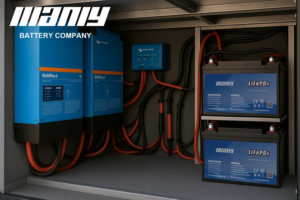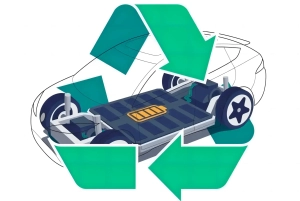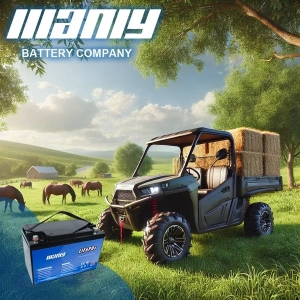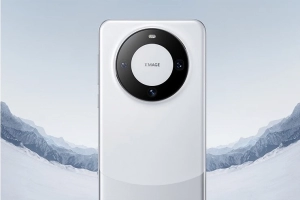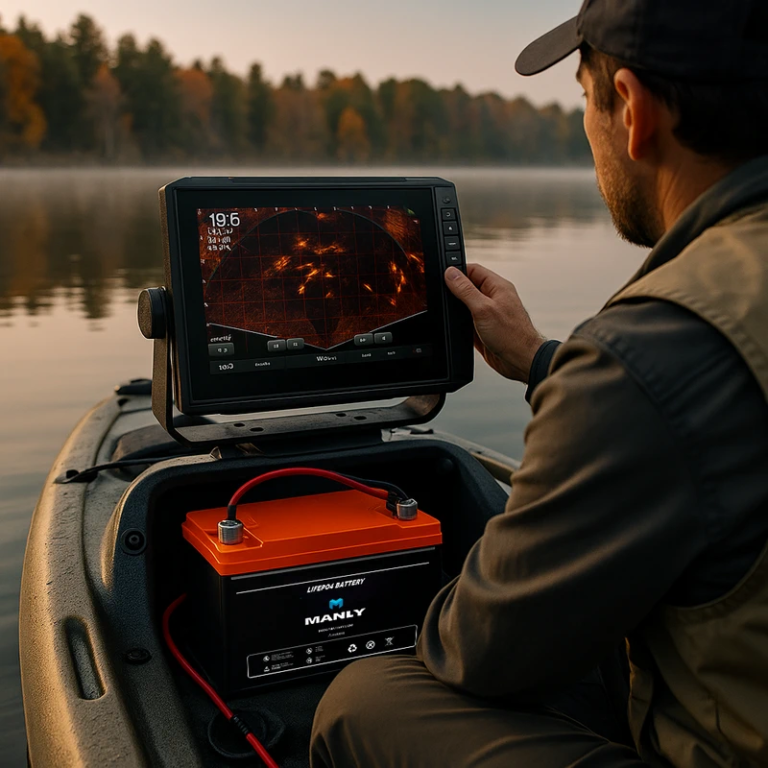As 5 principais opções de bateria para sua scooter elétrica em 2023
Índice
- As 5 principais opções de bateria para sua scooter elétrica em 2023
- 1. Dominando o básico: o quê e por que das baterias de scooter elétrica
- 2. Especificações de bateria desmistificantes: um guia de scooterist para termos da bateria
- 3. Baterias reveladas: um mergulho profundo em vários tipos de bateria
- 4. Falagem de tensão: o dreno oculto no poder da sua scooter
- 5. Classificação de capacidade: Quanto suco sua scooter realmente tem?
- 6. T Taxa: Desvendando o mistério da taxa de descarga de bateria do seu scooter
- 7. Dicas para manter sua duração de bateria longa da scooter elétrica
- 8. Sinais de alerta: detectar uma bateria de scooter elétrica fracassada antes que seja tarde demais
- 9. Prevenção de incêndios da bateria da scooter elétrica: medidas de segurança que você precisa saber
- 10. Conclusão
1. Dominando o básico: o quê e por que das baterias de scooter elétrica
No mundo das scooters elétricas, é essencial entender o papel principal das baterias. Eles não são apenas fontes de energia - ditam o desempenho, a velocidade, a faixa e a vida útil do seu scooter. Agora, o que exatamente é uma bateria de scooter elétrica? Simplificando, é a potência da sua scooter. Ele armazena e descarrega a eletricidade para manter sua viagem em movimento. Desde a alimentação do motor até a iluminação dos faróis, a bateria é crucial para todos os componentes elétricos da sua scooter. Sem ele, seu e-scooter é apenas um baralho com rodas. Por que o tipo de bateria é tão crítico? É simples - nem todas as baterias são construídas da mesma forma. Você encontrará vários tipos, como chumbo-ácido, hidreto de níquel-metal, ions de lítio eLiFePO4no mercado. Cada tipo vem com seus prós e contras, afetando o desempenho da sua scooter. Por exemplo, considere a química por trás dessas baterias. As baterias de chumbo-ácido podem ser mais acessíveis, mas são mais pesadas e têm uma vida útil mais curta. Por outro lado, as baterias de lítio, como Li-Ion ou LifePo4, são leves e duradouras, mas custam mais adiantamento. Geralmente é denotado em ampere-horas (ah). Uma capacidade mais alta significa uma faixa de viagem mais longa para sua scooter. Portanto, uma bateria 20AH normalmente fornece um alcance mais longo que uma bateria 10AH, sendo todos os outros fatores iguais. Em resumo, a bateria do seu e-scooter é mais do que apenas uma unidade de armazenamento de energia. Isso afeta o desempenho, o alcance e a longevidade do seu passeio. Um entendimento básico de seu funcionamento pode ajudá-lo a otimizar sua experiência em scooter. Vamos nos aprofundar em diferentes tipos de bateria nas seções a seguir. Fique atento!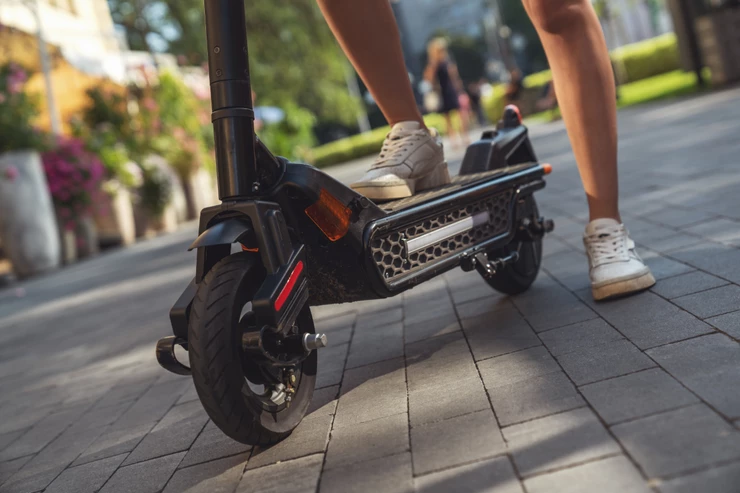
2. Especificações de bateria desmistificantes: um guia de scooterist para termos da bateria
Navigating the world of battery specifications can feel like learning a new language. But don't fret, in this section, I'll help demystify some common battery terms for the avid scooterist.Let's start with 'voltage'. You may have seen e-scooter batteries described as 36V, 48V, or 52V. 'V' stands for volts, the unit of voltage. Simply put, voltage is the 'push' that gets the electricity flowing. It's like water pressure in a hose. The 36v in an electric scooter battery 36v tells us its voltage is 36 volts. Higher voltage means more power, leading to a faster scooter.What about 12 volt battery for electric scooter? This is a lower voltage battery. It delivers less power, but it's lighter and cheaper. It's often seen in smaller, less expensive scooters.Now, 48v lithium battery for electric scooter. This one packs a lot of power. Its high voltage is perfect for faster, more powerful scooters. Yet, it's still relatively light and compact, thanks to its lithium construction.Next up is 'capacity', usually measured in Ampere-hours (Ah). It's a measure of how much energy a battery can store. For instance, a 10Ah battery can theoretically deliver a current of 10 Amps for an hour. Higher capacity usually equals a longer ride range, all other factors being equal.You might also come across the term 'C rate'. It refers to the rate at which a battery is discharged relative to its maximum capacity. A 1C rate means the discharge current will drain the entire battery in one hour.Let's talk about 'Voltage Sag'. It's the temporary drop in a battery's voltage under load. You might notice your e-scooter slowing down a bit when climbing hills, even though the battery isn't low. That's voltage sag in action!One more critical term is 'Battery Management System' or BMS. It's like the battery's personal assistant, ensuring it charges and discharges safely and efficiently. A good BMS can prolong your battery's life and keep it in top shape.Finally, you may hear about 'Swappable Batteries'. These are exactly what they sound like - batteries you can swap out. This feature is becoming increasingly popular in e-scooters. It allows you to extend your range by carrying a spare, fully-charged battery.So, there you have it. A quick guide to common battery specifications. Armed with this knowledge, you'll find it easier to understand battery specs and make informed choices when buying or maintaining your e-scooter. But the learning doesn't stop here. Stay tuned as we dive deeper into specific battery types in the next section!3. Baterias reveladas: um mergulho profundo em vários tipos de bateria
3.1 baterias de chumbo-ácido:
As we delve into our battery exploration, let's first turn our attention to the age-old contender in the realm of electric scooter power: Lead-acid batteries.Rooted in an age-old technology, lead-acid batteries are quite similar to the battery you'd find under the hood of your car. They're known for their reliability, making them a common choice for a wide array of rechargeable battery applications. Need a burst of power to start a car? A lead-acid battery gets the job done. However, they're not without their shortcomings.The most glaring downside of lead-acid batteries lies in their energy density, which is markedly poor. Simply put, energy density tells you how much energy a battery can store relative to its weight. In this arena, lead-acid batteries disappoint. They are notably heavy for the amount of energy they contain. In comparison, Li-ion batteries (a category we'll delve into later) outperform lead-acid batteries by about tenfold in terms of energy density.So, where do we often find these hefty power storages? They're commonly used in golf carts, forklifts, and, notably, kids' e-scooters. Companies like Razor offer inexpensive electric scooters for children powered by lead-acid batteries.Yet, their appeal lies in their price tag. These batteries are relatively inexpensive, which often makes them an appealing choice, especially for lower-priced electric scooters designed for young riders.In a nutshell, while lead-acid batteries bring reliability and a friendly price tag to the table, their poor energy density and weighty nature make them less than ideal for more demanding electric scooter applications. Keep reading as we dive into more efficient, lightweight alternatives in the upcoming sections.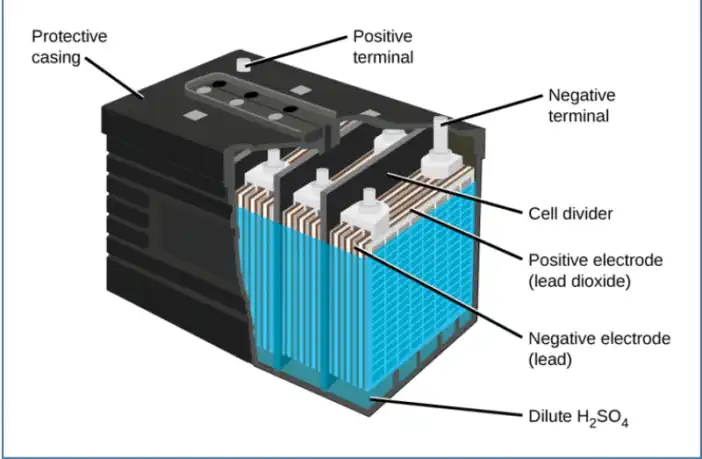
3.2 Baterias de hidreto de níquel-metal:
Shifting gears, let's now explore the realm of Nickel-Metal Hydride batteries, the under-the-radar workhorses of the electric scooter world.As a newer technology compared to lead-acid, Nickel-Metal Hydride batteries (commonly referred to as NiMH) provide a significant upgrade in performance. They're characterized by better energy density, meaning they pack more power into a lighter package. This trait alone makes them a go-to choice for those desiring a less weighty ride without compromising on power.But here's the kicker: NiMH batteries boast a lower self-discharge rate. In other words, they hold their charge longer when not in use. This makes them an appealing choice for scooter enthusiasts who don't ride daily but want their scooters ready to roll when they are.On the environmental front, NiMH batteries score some points, too. They contain no toxic heavy metals (like lead or cadmium), making them a more eco-friendly option. This attribute aligns well with the environmentally conscious ethos that drives many electric scooter users.However, it's not all sunshine and roses. Nickel-Metal Hydride batteries tend to be more expensive than their lead-acid counterparts. Additionally, they have a shorter overall lifespan and can exhibit a "memory effect" — a phenomenon where batteries lose their maximum energy capacity when repeatedly recharged after being only partially discharged.In summary, Nickel-Metal Hydride batteries offer a valuable step up from the dated lead-acid technology, providing enhanced energy density and longer charge retention. While they command a higher price and may not last as long, their environmental friendliness and performance perks make them a worthy contender in the world of electric scooter power sources. Stay tuned as we delve into even more advanced battery technologies in the sections to come.3.3 Baterias de íons de lítio:
Em seguida na fila, temos os grandes jogadores no jogo de bateria de scooter elétrico -Baterias de íons de Li. Renowned for their high-energy density, Li-Ion batteries pack a punch, delivering considerable power while maintaining a relatively light footprint. This optimal energy-to-weight ratio is a significant factor in their popularity among electric scooter enthusiasts.The versatility of Li-Ion batteries is another feather in their cap. This technology hosts a variety of chemistries, each having its unique characteristics and strengths. From Lithium manganese oxide (LiMn2O4) and Lithium manganese nickel (LiNiMnCoO2) to Lithium iron phosphate (LiFePO4), each variant presents a different trade-off between performance and safety.Now, let's crunch some numbers. Compared to technologies like Ni-Cd (Nickel-Cadmium) or Ni-MH (Nickel-Metal Hydride), Li-Ion batteries can deliver three times more energy. This high output, coupled with their excellent longevity, ensures that they stay power-ready for a long haul, making them an attractive choice for frequent riders.Maintenance? With Li-Ion batteries, you can strike that off your list. These batteries are low-maintenance, freeing you from the need for scheduled cycling to retain battery life. Moreover, they're immune to the memory effect, a notorious issue with some battery types where repeated partial charge-discharge cycles lower the overall capacity.However, it's not a complete smooth sailing with Li-Ion batteries. They are prone to overheating and can incur damage at high voltages. Hence, they require built-in safety mechanisms to keep internal pressure and voltage in check, occasionally adding to their weight and marginally limiting performance.Li-Ion batteries also age over time, losing capacity and starting to falter after several years. Yet, considering their overall performance and longevity, many users see this as a worthwhile trade-off.To sum it up, Li-Ion batteries, despite a few hiccups, offer a solid, efficient, and reliable power source for electric scooters, keeping you on the move with minimum fuss. As we proceed further, we'll explore another exciting addition to this league - the game-changing LiFePO4 batteries.3.4 Manganês de lítio (INR, NMC):
If you're seeking a safe, high-capacity choice for your electric scooter battery, Li-Ion batteries, particularly those with INR chemistry, are a top choice. These batteries have cemented their place as favorites among electric scooter enthusiasts and for good reason.The INR, or Lithium Manganese Nickel, battery chemistry is hailed as one of the safest. These batteries don't just offer high capacity; they also provide high output current. Thanks to the presence of manganese, the internal resistance of these batteries is reduced, allowing for high current output while maintaining cooler temperatures. As a result, this reduces the chances of thermal runaway and fire, contributing to the overall safety of your electric scooter. It's no wonder that quality electric scooters like the WePed GT 50e and various Dualtron models are equipped with INR batteries.But safety isn't the only upside of these batteries. Li-Ion batteries with INR chemistry also shine in terms of energy density and longevity. With a higher energy density, these batteries can store more power, extending the range of your electric scooter ride. In terms of longevity, these batteries have a longer lifecycle compared to cobalt-based batteries, all the while being more cost-efficient.More so, INR batteries exhibit superior thermal stability than their LCO counterparts, adding another layer to their safety profile. This makes them a common choice not just for electric scooters, but also for power tools and e-bikes.However, every coin has two sides, and INR batteries are no exception. Despite their plethora of benefits, they do have a minor shortcoming. These batteries deliver a slightly lower voltage than cobalt-based batteries. But for many scooterists, the high capacity, safety, and cost-efficiency of INR batteries more than makeup for this small drawback.In conclusion, if you're looking for a high-flying favorite in the realm of electric scooter batteries, Li-Ion batteries, particularly those with INR chemistry, certainly make the cut. Their blend of safety, power, and longevity offers an unmatched riding experience, helping you make the most of your electric scooter adventures.3.5 Baterias LifePO4:
As baterias LifePO4 estão virando a cabeça no mundo do e-scooter. Eles são aclamados como a futura potência. Por que? Bem, por várias razões. Primeiro, eles têm uma alta densidade de energia. Essa é a conversa tecnológica por 'eles armazenam muito poder'. Os números? Eles são cerca de 90-120 WH/KG. Isso significa passeios longos, menos carregamentos. Segundo, eles têm um ciclo de vida impressionante. Estamos falando de 2000 a 5000 ciclos de carga. Muito além de seus concorrentes. O que isso significa? Seu scooter eletrônico será mais longo e mais forte, dando a você milhas e quilômetros de passeios suaves. O custo também é um fator. Sim, eles são mais caros. Mas considere isso, a longevidade deles significa que você os substituirá com menos frequência. A longo prazo, você economizará dinheiro. E TIME.TEMPALENTE, vamos falar de segurança. As baterias LIFEPO4 têm excelente estabilidade térmica. Eles são menos propensos a superaquecer, reduzindo o risco de incêndios na bateria. Esse é um grande cheque para a segurança. Em resumo,Baterias LiFePO4são uma ótima opção para os scooters eletrônicos. Eles oferecem alta potência, vida longa, eficiência de custos e segurança. O futuro parece brilhante com a LifePO4 liderando a carga.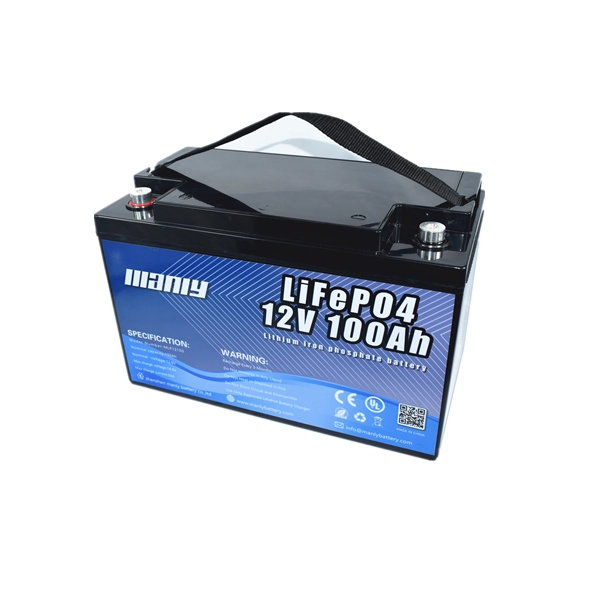
| Atributo | Bateria de chumbo-ácido | Bateria NIMH | Bateria de íon de lítio | Bateria INR (NMC) | Bateria LiFePO4 |
|---|---|---|---|---|---|
| Densidade Energética (Wh/kg) | 33-42 | 60-120 | 150-200 | 150-220 | 90-120 |
| Vida Útil | 500-800 | 500-1000 | 1000-2000 | 1000-2000 | 2000-5000 |
| Taxa de autodescrição (%/mês) | 5 | 20-30 | 2 | 2 | 3 |
| Taxa c | 1C | 1C-2C | 1C-2C | 2C-3C | 1C-2C |
| Tensão nominal (V) | 12 | 1.2 | 3.6 | 3.6 | 3.2 |
| Capacidade utilizável (ah) | 7.5 - 20 | 2 - 9 | 2 - 3 | 2 - 3 | 10 - 100 |
| Custo | $ | $$ | $$$ | $$$ | $$$ |
| Avaliação geral (estrelas) | ★★ ☆☆☆ | ★★★ ☆☆ | ★★★★ ☆ | ★★★★ ☆ | ★★★★★ |
4. Falagem de tensão: o dreno oculto no poder da sua scooter
Há um culpado sorrateiro no sistema de bateria da sua scooter que pode estar apenas drenando sua energia: cálculo de tensão. Mas o que exatamente é? É como uma mini queda de energia e, se você estiver de olho na tensão da bateria, pode parecer que você acabou de perder um pedaço significativo de seu poder. Mas não entre em pânico ainda. Uma vez que a carga diminui, a tensão da bateria salta de volta ao seu nível real. Poucos culpados podem estar por trás desse fenômeno. Pode ser a onda de energia necessária para iniciar o motor, um pouco de resistência elétrica, flutuações de temperatura ou mesmo um componente desonesto. A drenagem da bateria para sua última gota também pode desencadear que o lítio na bateria luta para acompanhar a taxa de descarga. Portanto, a queda de tensão acelera quanto mais você anda. Mas a certeza de que a bateria precisa apenas de um pouco de inatividade. Dar à sua bateria de scooter um tempo de descanso permite que ela se recupere ao seu verdadeiro nível de tensão. Então, da próxima vez que você perceber um mergulho repentino no poder, lembre -se, provavelmente é apenas uma queda de tensão fazendo suas coisas.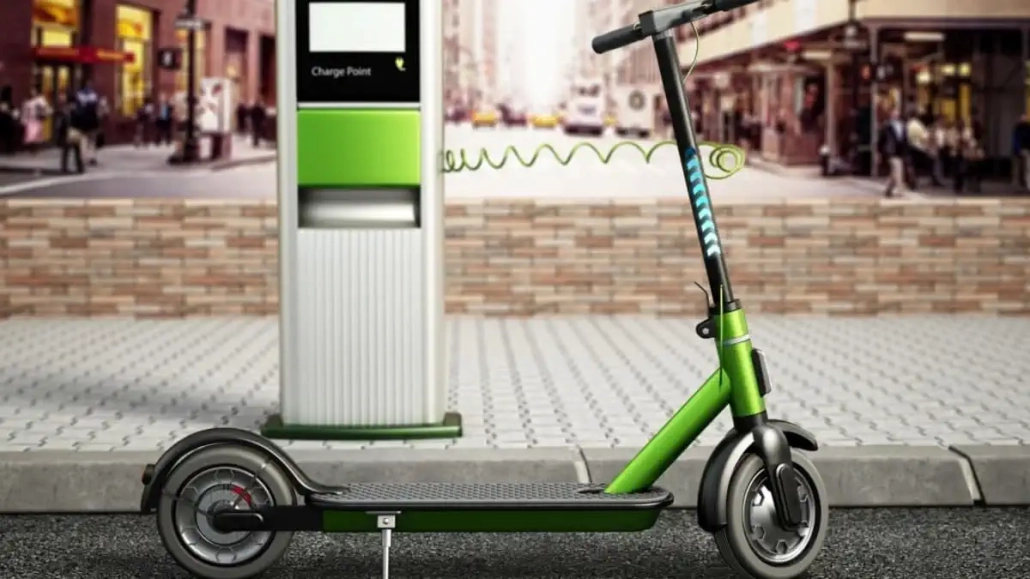
5. Classificação de capacidade: Quanto suco sua scooter realmente tem?
Você já se perguntou quanto 'suco' seu e-scooter pode realmente segurar? É aí que a classificação de capacidade entra em jogo. Ratada em unidades chamadas Watt-Hours (WH), a classificação de capacidade é essencialmente uma medida da energia que a bateria do seu e-scooter pode armazenar. Pense assim: uma bateria com 1 WH pode sustentar um watt de energia por uma hora inteira. E sim, o tamanho importa. Quanto maior a classificação Watt-Hour da bateria, maior sua capacidade de energia. Isso significa que ele pode alimentar sua scooter por um alcance mais longo, assumindo que o tamanho do motor seja constante. Sua scooter média, por exemplo, geralmente tem uma capacidade de cerca de 250 WH, traduzindo-se em uma viagem de 10 quilômetros a uma velocidade média de 24 quilômetros por hora. Mas e as grandes armas? Bem, alguns dos scooters eletrônicos de alto desempenho podem se orgulhar de milhares de watt-horas em capacidade, capacitando-os a cobrir distâncias de até 60 quilômetros. Então, da próxima vez que você verificar a bateria da sua scooter, lembre -se - é tudo sobre o Watt -Hours!6. T Taxa: Desvendando o mistério da taxa de descarga de bateria do seu scooter
Bem-vindo a outro recurso fascinante da bateria do seu e-scooter-a taxa C. Esse pequeno número misterioso é tudo sobre velocidade; Especificamente, a rapidez com que sua bateria carrega ou descarregam. Aqui está como ela funciona. Uma bateria com uma taxa C de 1C pode ser totalmente adulta em uma hora. Fácil o suficiente, certo? Agora, uma taxa C de 2C significa que sua bateria será totalmente carregada em apenas meia hora. Por outro lado, uma taxa C de 0,5 ° C exigiria duas horas para carregar completamente. Mas não se trata de cobrar. A taxa C também pode nos contar sobre a velocidade de descarga da bateria. Digamos que você tenha uma bateria totalmente carregada com uma capacidade de 10ah. Com uma classificação C de 1C, ele pode fornecer 10 amperes por uma hora. Se você estiver trabalhando com uma taxa C de 0,5 ° C, ele fornecerá 5 amperes em duas horas. E para uma taxa 2C? Você receberá 20 amperes por meia hora. Em essência, a taxa C da sua bateria fornece informações valiosas sobre a velocidade com que ela pode fornecer ou reabastecer sua energia armazenada. Um pouco de conhecimento útil para ter debaixo do seu cinto, não é?7. Dicas para manter sua duração de bateria longa da scooter elétrica
Riding your electric scooter is fun, no doubt about it. But keeping your electric scooter battery time longer? That's where the real satisfaction comes in. When it comes to Li-ion batteries, like those powering your e-scooter, you're looking at about 300 to 500 charge/discharge cycles before seeing a noticeable drop in capacity. Put in perspective, that's a whopping 3,000 to 10,000 miles on an average scooter!Now, don't panic when you hear "drop in capacity". It doesn't mean your battery's on its last legs. Rather, you might notice a 10 to 20% decrease in capacity that gradually worsens over time. Thanks to modern battery management systems, you won't need to stress too much over prolonging electric scooter battery time. But if you're all about efficiency, there are a few things you can do to stretch those cycles even further.Avoid storing your scooter with the charger plugged in or when it's fully charged for long periods. Similarly, don't let your scooter's battery get too low. Most manufacturers recommend storing your scooter with about 50% charge, and topping it up to this level now and then for extended storage. Extreme temperatures, both hot and cold, are no friends to your battery. Stick within 32 to 113 degrees Fahrenheit for optimal performance. And finally, consider charging at a lower C-rate, which means charging your battery slower relative to its max capacity.By taking a little extra care, you can go the extra mile - or a few thousand - on your electric scooter. Enjoy the ride!

